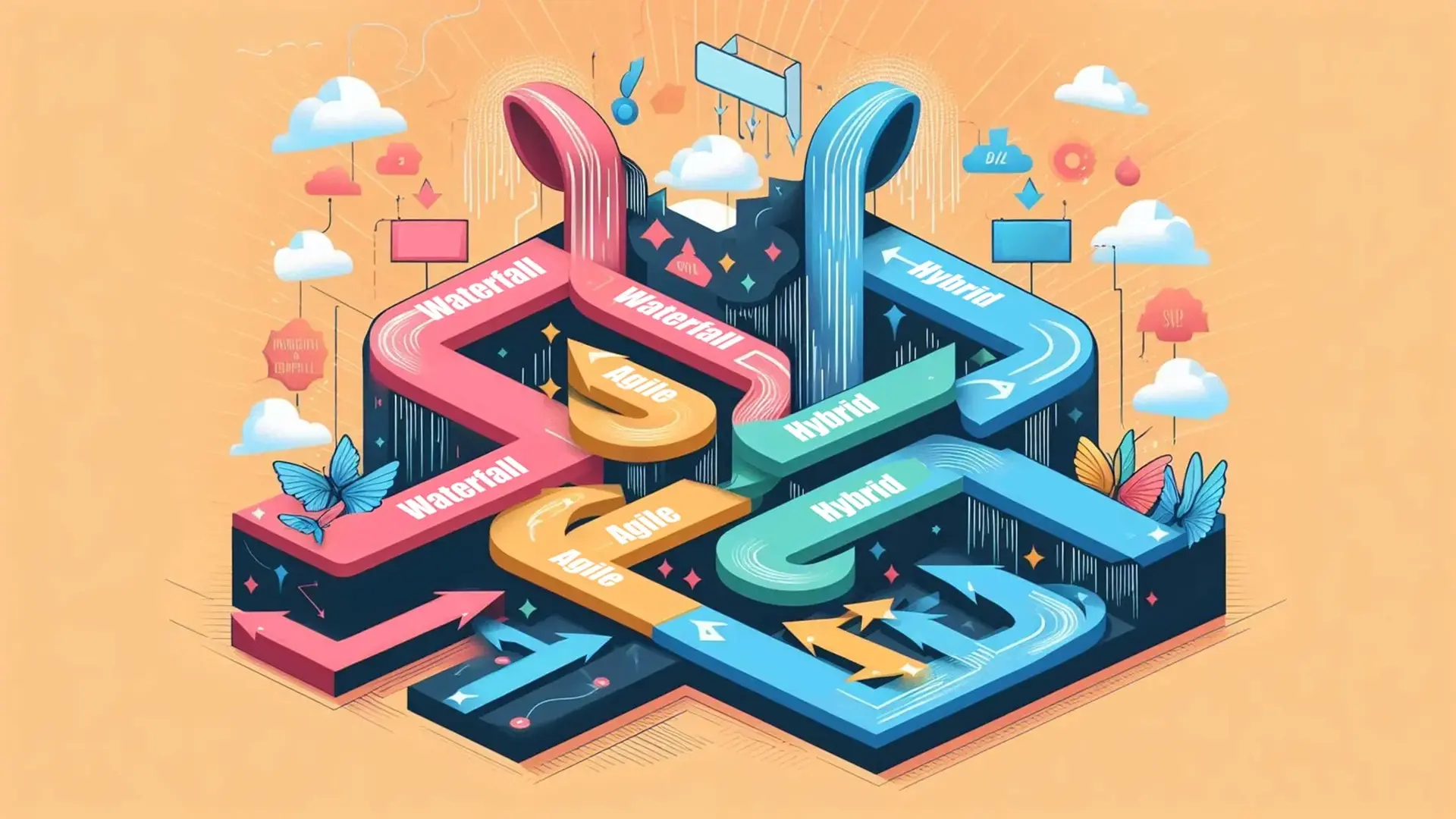- April 11, 2024 6:01 am
- by Aruthra
- April 11, 2024 6:01 am
- by Aruthra

Software development methodologies are the strategic approaches and frameworks used to guide the development process of software applications. These methodologies are crucial for successful project management as they provide a structured and organized way to handle various stages of software development, ensuring efficiency, quality, and timely delivery. The three main types of software development methodologies are Agile, Waterfall, and Hybrid.
In this blog, we'll explore the Agile, Waterfall, and Hybrid methodologies, aiming to assist readers in choosing the most suitable approach for their projects based on their goals, requirements, and preferences.
Agile is an iterative and incremental approach to software development that emphasizes collaboration, flexibility, and customer feedback. Key features include iterative development cycles, incremental additions of features, collaboration among team members, adaptability to changes, and a customer-centric focus.
Agile methodologies include Scrum, Kanban, Extreme Programming, Lean, Feature-Driven Development, and Dynamic Systems Development Method.
Clear Roles and Responsibilities:Define roles such as Scrum Master, Product Owner, and team members clearly to avoid confusion and ensure accountability.
Utilize Collaboration and Communication Tools:Employ tools like project management software, communication platforms, and visual boards to facilitate collaboration and transparency.
Prioritize Tasks and Features Based on Value and Urgency:Use techniques like user stories, prioritization matrices, and backlog grooming sessions to identify and prioritize high-value tasks and features.
Foster a Culture of Adaptability and Continuous Improvement:Encourage a mindset of adaptability and learning within the team, where failures are viewed as opportunities for growth. Conduct regular retrospectives to reflect on what went well and what could be improved, and implement changes accordingly.
Embrace Iterative Development:Break down work into small, manageable chunks and deliver iteratively, gathering feedback early and often to make informed decisions and adjustments.
Encourage Cross-Functional Teams:Foster collaboration and diversity of skills within the team to promote innovation and problem-solving.
Focus on Delivering Value to the Customer:Keep the customer's needs and feedback at the forefront of development efforts, striving to deliver value with each iteration.
By following these tips and leveraging Agile frameworks like Scrum, Kanban, XP, and Lean, teams can effectively manage projects, respond to change, and deliver high-quality products that meet customer needs.
The Waterfall methodology follows a sequential and structured approach, where each phase must be completed before moving on to the next. It is document-driven and typically involves clearly defined phases: requirements, design, implementation, testing, deployment, and maintenance.
Examples include the classic Waterfall model, V-Model, and the Big Bang model.
To implement Waterfall effectively, define clear and detailed requirements and specifications at the beginning, manage changes and risks carefully using appropriate tools, and conduct thorough testing and validation at each phase.
The Hybrid methodology, as the name suggests, combines elements of both Agile and Waterfall methodologies. It aims to balance the strengths and weaknesses of both approaches by customizing the development process based on specific project needs.
Understanding these distinct benefits will aid in making an informed decision when choosing the appropriate software development methodology for a given project.
Hybrid models can include the Agile-Waterfall hybrid model, the Spiral model, and the Rapid Application Development (RAD) model.
To implement Hybrid methodologies effectively, carefully identify the best fit for each phase or component of the project, utilize tools to integrate and coordinate different methodologies seamlessly, and establish clear communication and feedback channels between team members and stakeholders.
Selecting the appropriate software development methodology is a critical decision that significantly impacts the success of a project. Understanding the distinct features, benefits, and challenges of Agile, Waterfall, and Hybrid methodologies is essential for making an informed choice based on your project's unique needs. Whether you opt for the collaborative and iterative Agile approach, the structured and sequential Waterfall methodology, or a tailored Hybrid approach, aligning your choice with your project's requirements and objectives will pave the way for a successful software development journey.
Guaranteed Response within One Business Day!

How Much Does It Cost to Design an App?

Angular Best Practices For Web Applications

How to Set Up a Development Environment in React.JS?

What are the 6 Models Used In SDLC?

Why React Front-End Development is the Best